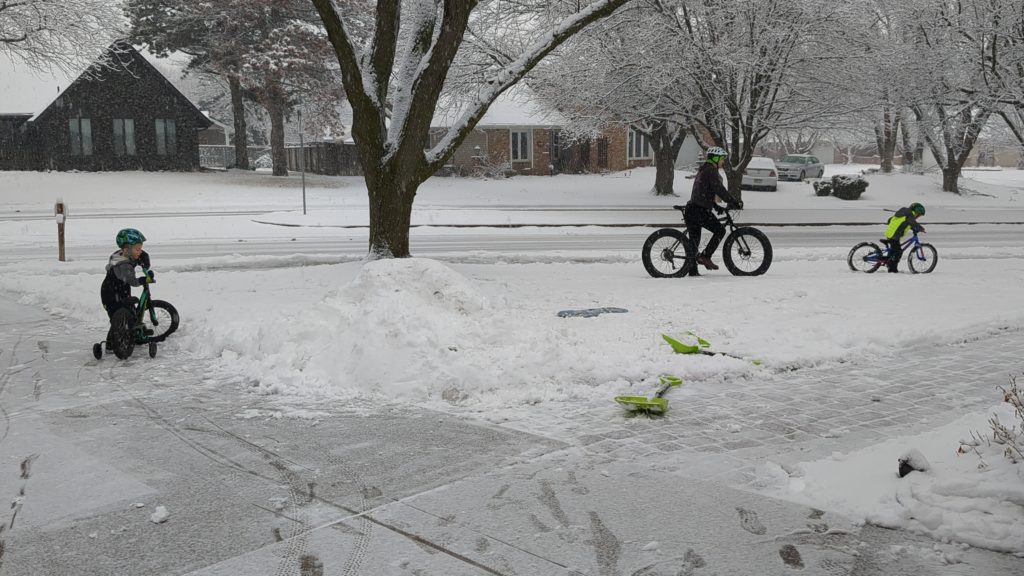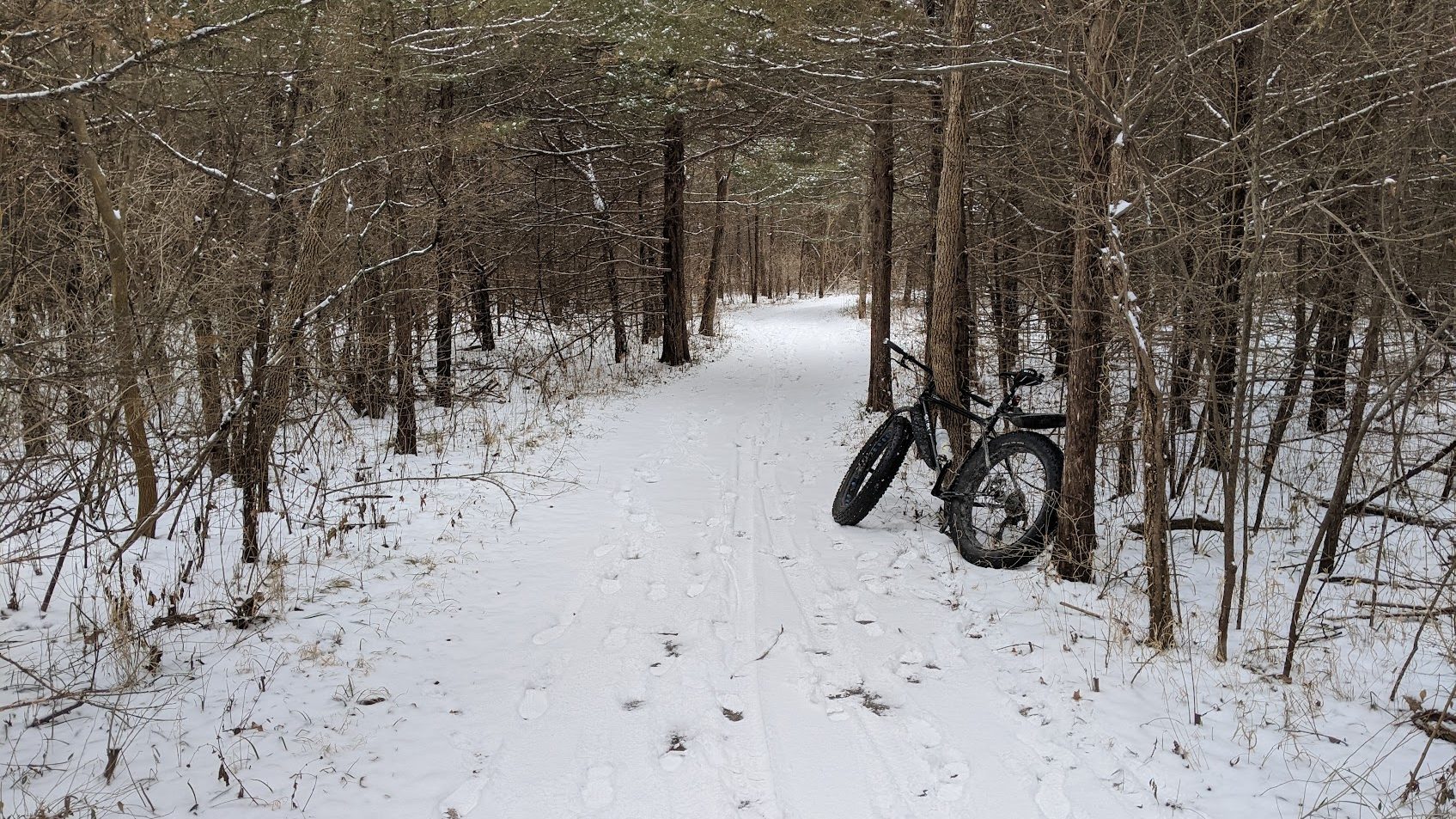
As winter blankets Lincoln, NE in a shimmering fresh coat of snow, our love for biking doesn’t have to hibernate. Whether you’re a year-round commuter or an occasional rider, here are some tips that will ensure your winter biking experience remains safe and enjoyable.
Check Your Tires, Tread, and Consider Studded Tires
Bald tires are the enemy of winter riders. Opt for a pair with treads designed for snow and ice, or go the extra mile with studded tires for enhanced traction on icy roads. Winter conditions demand the utmost from your tires, so make sure they’re up for the challenge.
Drop Your Tire Pressure for Added Traction
Lowering tire pressure increases the contact patch, providing additional traction on snowy surfaces. Keep in mind the trade-off, especially if you’re using tubes, as lower pressure may elevate the risk of pinch flats. Tubeless riders, on the other hand, can enjoy the benefits without the worry.
Adjust Your Riding Style for Winter Conditions
Slowing down is the name of the game when it comes to winter biking. Anticipate stops well in advance, avoid abrupt braking, and maintain a more upright position on your bike to navigate turns more safely. A balanced distribution of power will prevent unnecessary spinning when accelerating.
Be Flexible with Your Routes
Your favorite bike trails might turn into icy traps during the winter. Stay vigilant and be open to alternative routes that are better maintained, even if it means hitting the streets. Sometimes the longer route may prove to be the faster and safer choice when snow and ice cover your usual path.

Dress Smart and Stay Dry
Winter biking requires a strategic approach to clothing. Opt for well-ventilated waterproof coats to shield yourself from the elements while preventing excessive sweating. A helpful tip is to start your ride slightly chilly, as the generated heat will quickly warm you up to a comfortable temperature.
Embrace the Inevitability of Falls
Falls happen, especially in winter conditions. By acknowledging this reality, you can adjust your speed and decision-making accordingly. Keeping both in check ensures that, if a fall occurs, it won’t lead to serious injuries.
Know When to Call It a Day
Winter weather can be brutal, and sometimes it’s wiser to stay off the bike. Have a plan in place for such situations – a designated friend or family member, public transit, or ridesharing options can be your alternatives. Having a backup plan is essential, and if you were a regular commuter, consider having a StarTran bus pass as a reliable contingency. Your safety should always take precedence over the thrill of winter biking.
What Else?
What invaluable advice do our readers have for fellow cyclists navigating the winter wonderland? Your experiences and insights can create a collective resource that enhances the winter biking community. Let’s build a dialogue, swap stories, and ensure everyone can pedal through winter with confidence. Drop your suggestions in the comments here or on Facebook!
